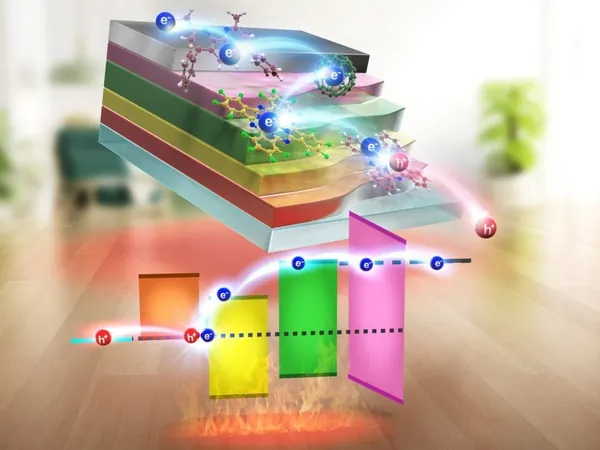
Exciting Breakthrough: Room Temperature Thermal Generator Developed by Japanese Researchers!
2024-09-27
Overview
In an inspiring development from Japan, researchers at Kyushu University have unveiled a groundbreaking organic thermoelectric device capable of harvesting energy from ambient temperatures—without requiring a temperature gradient. This innovation opens up exciting possibilities for energy efficiency and sustainability.
Traditional Thermoelectric Generators
Traditionally, thermoelectric generators rely on a temperature difference—one side hot and the other cool—to convert heat into electricity. This method has garnered significant attention as a means to capture waste heat from various energy-generating processes. However, the new thermal generator created by the Kyushu team eliminates this need for a temperature gradient, representing a significant leap forward in energy technology.
How It Works
The unique device operates using an innovative power generation mechanism that can extract small-scale thermal energy—measuring just a few tens of millielectronvolts—at room temperature. According to a recent publication in *Nature Communications*, the device utilizes interfaces made from copper phthalocyanine and copper hexadecafluoro-phthalocyanine as the donor and acceptor materials.
Performance Metrics
It achieves an impressive open-circuit voltage of 384 mV, a short-circuit current density of 1.1 μA/cm², and a maximum output power of 94 nW/cm²—all without the need for a temperature gradient!
Research Leadership
Professor Chihaya Adachi, who leads the project at the university’s Centre for Organic Photonics and Electronics Research (OPERA), explained the team's vision: “We aimed to create a thermoelectric device that efficiently harvests ambient energy. Our research focuses on the potential of organic compounds, many of which exhibit remarkable energy transfer capabilities, similar to what we see in OLEDs or organic solar cells.”
Charge Transfer Interfaces
Critical to the success of this new device was the identification of effective charge transfer interfaces that facilitate electron movement. After extensive testing, the researchers selected two promising compounds—copper phthalocyanine (CuPc) and copper hexadecafluoro phthalocyanine (F16CuPc). To enhance the thermoelectric properties, they also incorporated fullerenes and BCP, known for their electron transport facilitation, into the device design.
Device Structure
The final optimized structure includes a 180 nm layer of CuPc, a 320 nm layer of F16CuPc, along with 20 nm each of fullerene and BCP.
Future Exploration
Professor Adachi noted, “The advancements in thermoelectric devices are impressive, and our novel organic device marks a significant step forward. We are eager to explore further optimizations with alternative materials, and there is potential for increasing current density by enlarging the device’s surface area.”
Conclusion
This innovative approach to energy harvesting showcases the remarkable capabilities of organic materials and positions the research group as frontrunners in the race for sustainable energy solutions. As they continue to refine their device, the implications for energy efficiency across various applications are incredibly promising!
Stay Tuned
Stay tuned for more updates on this revolutionary technology and its potential real-world applications!




 Brasil (PT)
Brasil (PT)
 Canada (EN)
Canada (EN)
 Chile (ES)
Chile (ES)
 España (ES)
España (ES)
 France (FR)
France (FR)
 Hong Kong (EN)
Hong Kong (EN)
 Italia (IT)
Italia (IT)
 日本 (JA)
日本 (JA)
 Magyarország (HU)
Magyarország (HU)
 Norge (NO)
Norge (NO)
 Polska (PL)
Polska (PL)
 Schweiz (DE)
Schweiz (DE)
 Singapore (EN)
Singapore (EN)
 Sverige (SV)
Sverige (SV)
 Suomi (FI)
Suomi (FI)
 Türkiye (TR)
Türkiye (TR)